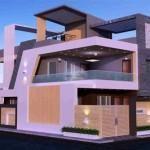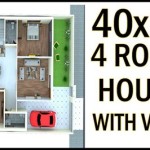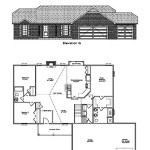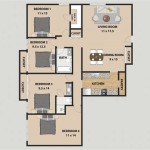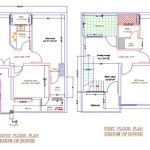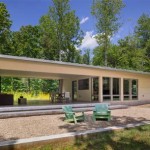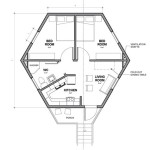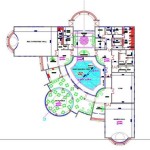Duplex Homes: Exploring Diverse House Plans and Their Advantages
Duplex homes, characterized by two separate living units within a single building, represent a versatile housing option for various demographics. These structures offer opportunities for homeowners, renters, and investors alike, providing solutions for multi-generational living, rental income generation, and affordable housing.
The appeal of duplex homes lies in their adaptability. They can be designed in various architectural styles, from traditional to contemporary, and can be customized to meet the specific needs and preferences of their occupants. The core concept remains consistent: two distinct residences sharing a common wall or floor, each with its own entrance, utilities, and living spaces.
Careful consideration must be given to house plans when designing or selecting a duplex. The layout should maximize privacy and minimize noise transfer between the units. Factors such as shared walls, stairwells, and outdoor spaces require meticulous planning to ensure both residents enjoy a comfortable and independent living experience.
Key Point 1: Benefits of Choosing a Duplex Home
Duplex homes offer a range of advantages compared to single-family homes or apartment complexes. These benefits often attract both homeowners and investors seeking a balance between affordability, privacy, and income potential.
Affordability: Purchasing a duplex can be more affordable than purchasing two separate single-family homes. The shared structure reduces construction costs and land usage, making it an attractive option for first-time homebuyers or those looking to downsize.
Income Generation: One of the most significant advantages of owning a duplex is the potential for rental income. Homeowners can live in one unit and rent out the other, using the rental income to offset mortgage payments, property taxes, and other expenses. This feature can significantly ease the financial burden of homeownership.
Multi-Generational Living: Duplexes provide an ideal solution for families who wish to live close to each other while maintaining their independence. Elderly parents can reside in one unit while their adult children and grandchildren occupy the other, facilitating family support and caregiving while preserving privacy.
Investment Potential: Duplexes are considered a sound investment due to their potential for consistent rental income and appreciation in value. The ability to generate revenue from two separate units increases the overall profitability compared to single-family rental properties.
Property Management Simplification: Managing a duplex can be simpler than managing multiple single-family rental properties. Having both units under one roof streamlines maintenance and repairs, reducing travel time and logistical complexities for landlords.
Key Point 2: Exploring Different Duplex House Plan Types
Duplex house plans are not monolithic; they come in various configurations tailored to different lot sizes, architectural preferences, and homeowner needs. Understanding the various types can aid in selecting the best option for a specific situation.
Side-by-Side Duplex: This is perhaps the most common type, where the two units are situated next to each other, sharing a common wall. Each unit typically has its own front and back entrance, and the layout often mirrors the other, creating a symmetrical appearance. This design allows for ample natural light and independent outdoor spaces.
Up-and-Down Duplex: In this configuration, one unit is located on the ground floor, while the other occupies the upper floor(s). This layout is well-suited for sloped lots or areas with limited space. Careful attention to soundproofing is crucial in this design to minimize noise transfer between the units.
Front-to-Back Duplex: This type involves dividing the building lengthwise, with each unit having its entrance on opposite sides of the property. This design offers increased privacy compared to side-by-side duplexes, as there is no shared front yard or immediate proximity between entrances.
Detached Duplex: While technically not a true duplex in the strictest sense, a detached duplex consists of two separate, self-contained units on a single property. This offers maximum privacy and independence for both residents, resembling two small, individual homes.
Accessory Dwelling Unit (ADU) Duplex: This involves adding a separate living unit to an existing single-family home. The ADU can be attached (e.g., an in-law suite) or detached (e.g., a backyard cottage). This option is becoming increasingly popular due to zoning changes in many areas that encourage the creation of additional housing units.
Each of these duplex types offers different advantages and disadvantages in terms of privacy, noise control, construction costs, and property value. The selection process should involve evaluating these factors in relation to the specific needs and goals of the homeowner or investor.
Key Point 3: Essential Considerations for Duplex House Plans
Designing a functional and appealing duplex requires careful attention to several key considerations. These aspects are crucial for ensuring both residents enjoy comfortable, private, and independent living experiences.
Privacy and Soundproofing: Minimizing noise transfer between units is paramount. This can be achieved through various methods, including using sound-dampening insulation in the shared wall, installing resilient channels, and employing staggered stud construction. The placement of bedrooms and living areas should also be strategic to avoid proximity to shared walls.
Separate Entrances and Utilities: Each unit must have its own distinct entrance to ensure privacy and independence. Similarly, individual utility meters (electricity, water, gas) are essential for accurate billing and to avoid disputes between tenants. Consider separate HVAC systems for each unit to allow for independent temperature control.
Layout and Space Optimization: The interior layout should maximize space utilization and provide adequate living areas for each unit. Consider open-concept designs to create a sense of spaciousness and incorporate ample storage solutions. Ensure each unit has its own kitchen, bathroom(s), bedrooms, and living room.
Outdoor Spaces: Provide separate and private outdoor spaces for each unit, such as patios, decks, or yards. This allows residents to enjoy outdoor activities and relaxation without encroaching on each other's privacy. Fencing or landscaping can be used to further delineate the boundaries between the outdoor spaces.
Accessibility: Consider incorporating universal design principles to enhance accessibility for residents with disabilities or mobility limitations. This may involve features such as wider doorways, ramp access, grab bars in bathrooms, and lever door handles.
Zoning and Building Codes: It is crucial to verify local zoning regulations and building codes before commencing any construction or renovation project. These regulations may dictate allowable density, setback requirements, parking restrictions, and other factors that can impact the feasibility and design of the duplex.
Shared Amenities: Determine whether any amenities, such as laundry facilities or parking areas, will be shared between the units. If so, establish clear rules and guidelines for their use to avoid conflicts between residents. Consider providing separate laundry facilities for each unit to enhance convenience and privacy.
Architectural Style and Aesthetics: The exterior design of the duplex should be aesthetically pleasing and blend harmoniously with the surrounding neighborhood. Choose architectural styles and materials that are durable, low-maintenance, and consistent with the local architectural vernacular. Consider the impact of the design on property values and curb appeal.
Future Flexibility: Consider the potential for future modifications or conversions. Designing the duplex with flexibility in mind can allow for future adaptation to changing needs, such as combining the units into a single-family home or adding additional living space. This foresight can enhance the long-term value and adaptability of the property.
By carefully considering these essential aspects, developers and homeowners can create duplex homes that offer comfortable, functional, and attractive living spaces for both residents, while maximizing the financial and investment potential of the property. A well-designed duplex benefits not only the occupants but also contributes positively to the surrounding community.
House Plan Of The Week Multigenerational Duplex Builder

Unique House Plans And Home Designs Thehouseplan Com

Best Ing Duplex Plans House Modern Designs Floor Home Catalog

Duplex House Plans

Duplex House Plans Floor Garage

Hpg 990 1 The Duplex House Plans
Top 10 Duplex Plans That Look Like Single Family Homes Houseplans Blog Com

Duplex House Plans Full Floor Plan 2 Bed Bath Cottage

Top 10 Duplex Plans That Look Like Single Family Homes Houseplans Blog Com

Duplex Best Ing House Plans 2 Family Plan

